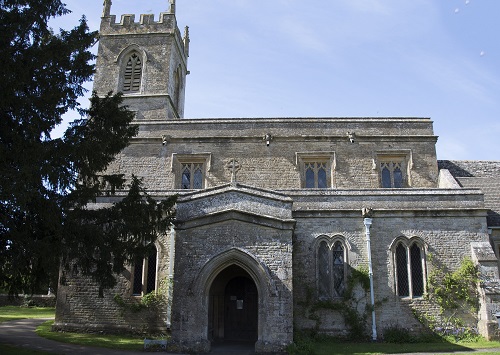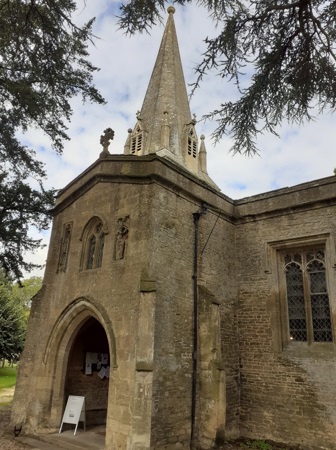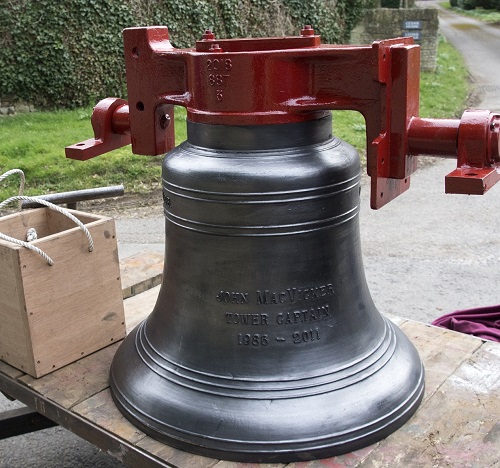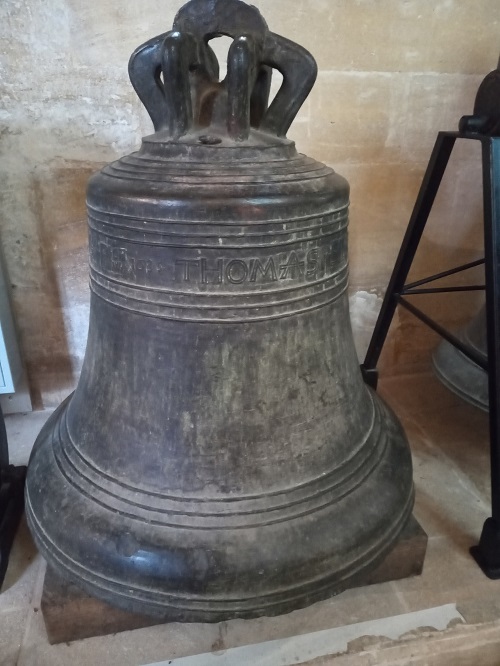During a recent Wychwoods History Society talk, Chris Pickford, expert in the history of bells and bellringing, made a special mention of the bells at St Nicholas’ Church in Chadlington.
He reminded us of interesting times, when a landowner could bodily remove a village and its inhabitants to improve estate parklands. In this case we have Lord Harcourt of Nuneham Courtenay doing exactly that. In the 1760s, he demolished the church and removed its five bells.
Chris Pickford’s research – featured here on the Wychwoods History website – demonstrates in detail how those five bells, with a sixth added in 1796, are now housed in Chadlington church – a rare early example of a transferred ringing peal of bells.

In this coronation year with bellringing very much part of the celebrations marking change, it seems apposite to think of stories such as these. There is a rich history hidden in church towers throughout the land, and particularly in the Wychwoods. Bells can be vulnerable – one thinks of the church of St. Peter and St. Paul in Deddington, where all but one of the five bells had been requisitioned by Charles I in 1643 and melted down to be made into artillery!
A less dramatic reminder of the need to look after the heritage of bells was the refurbishment and re-hanging of the bells in Shipton in 2019 – an event which brought the community together in fundraising to ensure their future.


Those Shipton bells were worked on by the last remaining bell foundry in the UK, John Taylor and Sons in Loughborough. But moving bells around the country was not always so straightforward. The two 15th-century bells at St. Nicholas Church in Idbury would have been made on site in a casting pit. Medieval transport systems precluded such manufacturing off site.
Ascott Holy Trinity is notable. Five of its six bells were cast in 1744 by Henry Bagley III. The family is important to the history of bellfounding in our area, having established a foundry in Witney and supplying bells for towers in Fulbrook, Witney, Shilton, Westwell and Standlake.
At Fulbrook until 2003 the ring of three included treble and tenor cast in Burford by Edward Neale – of the earlier and equally important bell-founding family. Neale’s Sanctus bell dates from 1649 and is still in use. Once again, village fundraising in Fulbrook allowed a new bell frame to be installed for a ring of six. The original treble now stands in the north aisle of Burford Church – the “bellfounders’ aisle”, beside two other Neale bells.

A single bell one might say, can have mournful overtones. I think of the curfew bell in Gray’s Elegy tolling the knell of parting day. Perhaps also of John Donne’s “never send to know for whom the bell tolls”. This latter is a somewhat ominous expression of the interconnectedness of humankind. This is better and more joyfully expressed by the change-ringing of multiple bells, and perhaps also by the simple “Peace and good neighbourhood” message on the treble bell at Idbury, and on the fourth of Chadlington’s peal of six.

